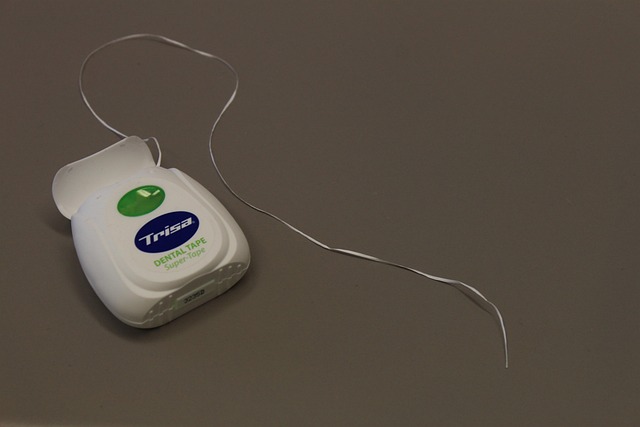Dental malpractice insurance is a crucial safety measure for oral health care providers, shielding them from financial and legal risks linked to negligence claims. It protects dentists and their practices from losses due to treatment errors like misdiagnosis or improper plans by covering legal fees, settlements, and offering defense against baseless allegations. This coverage enables professionals to prioritize patient care without financial worries, navigating a competitive industry with unique challenges. Selecting the right insurance involves understanding specific practice needs, evaluating coverage limits, policy exclusions, insurer reputation, and ensuring swift claim settlement. Regular policy reviews and updates are essential to adapt to evolving professional demands and maintain a robust safety net.
Dental providers face unique risks and challenges that require robust professional protection. This article explores the crucial aspect of dental malpractice insurance, delving into its coverage, benefits, and why it’s indispensable for dentists and oral health professionals. We’ll guide you through common risks, policy types, selection tips, claims processes, and best practices to ensure continuous protection against potential liabilities. Understanding dental malpractice insurance is a key step in safeguarding your practice and patients’ trust.
- Understanding Dental Malpractice Insurance: Coverage and Benefits
- Why Dental Providers Need Protection: Common Risks and Challenges
- Types of Dental Malpractice Insurance Policies Explained
- How to Choose the Right Dental Malpractice Insurance for Your Practice
- Claims Process: What to Expect When Filing a Claim
- Staying Protected: Best Practices for Maintaining Continuous Coverage
Understanding Dental Malpractice Insurance: Coverage and Benefits

Dental malpractice insurance is a crucial safety net for dental professionals, protecting them from potential financial and legal pitfalls resulting from negligence claims. This specialized coverage is designed to safeguard dentists, dental hygienists, and other oral health care providers against lawsuits and associated costs arising from errors or omissions during patient treatment. Such mistakes could include misdiagnosis, improper treatment plans, or failure to obtain informed consent.
The benefits of dental malpractice insurance are multifaceted. It provides financial protection by covering legal fees and settlements, offering peace of mind knowing that potential mistakes won’t bankrupt the practice. Additionally, it offers a defense fund, ensuring providers can fight back against baseless allegations. This coverage is essential for maintaining stability in a competitive industry, allowing dental professionals to focus on patient care without constant worry about financial exposure.
Why Dental Providers Need Protection: Common Risks and Challenges

Dental providers, like any healthcare professionals, face unique challenges and risks in their daily work. One of the primary reasons they require professional protection is dental malpractice insurance. This type of coverage safeguards them from potential lawsuits arising from alleged negligence or errors in treatment. Mistakes can happen, whether it’s a misdiagnosis, incorrect procedure, or failure to obtain informed consent – issues that could lead to significant legal and financial repercussions.
The risks are multifaceted. Patients often expect high-quality care, and any deviation from the standard of care can result in complaints. Plus, with advancements in dental technology and an increasing range of complex procedures, the potential for errors expands. Dental malpractice insurance acts as a shield, offering financial protection against legal fees, settlements, or judgments, ensuring providers can focus on patient care rather than potential liabilities.
Types of Dental Malpractice Insurance Policies Explained

Dental professionals, like any healthcare provider, face unique risks and potential liabilities. This is where dental malpractice insurance steps in as a crucial safety net. This type of insurance protects dental practitioners from financial loss in the event they are sued for professional negligence. Such negligence can include errors in treatment, misdiagnosis, or failure to obtain informed consent, among other things.
There are several types of dental malpractice insurance policies available, each designed to cover specific aspects of a dentist’s practice. General coverage includes professional liability, which protects against claims of negligence. More comprehensive policies may include additional coverage for legal expenses, medical expenses incurred by patients, and even personal injury or death caused by dental procedures. Understanding these options is essential for dental providers in managing risk and ensuring the financial security of their practice.
How to Choose the Right Dental Malpractice Insurance for Your Practice

Selecting the appropriate dental malpractice insurance is a critical step in safeguarding your practice and ensuring its longevity. The first consideration is to understand your practice’s specific needs and risks. Dental professionals face unique challenges, from managing patient expectations to dealing with complex procedures. Assess your practice’s level of risk by evaluating factors such as the type of services provided, the experience of your team, and compliance with industry standards.
When comparing dental malpractice insurance options, pay attention to coverage limits, policy exclusions, and the reputation of the insurance provider. Ensure that the policy adequately covers potential claims and provides sufficient liability protection. Additionally, consider the financial stability of the insurer to guarantee claim settlement in case of a lawsuit. Reviewing policy documents carefully and consulting with industry peers or legal experts can help you make an informed decision regarding the best dental malpractice insurance for your practice’s unique requirements.
Claims Process: What to Expect When Filing a Claim

When it comes to protecting yourself and your dental practice from potential liabilities, dental malpractice insurance is a crucial component. The claims process associated with this specialized coverage can seem complex, but understanding what to expect simplifies navigation through any challenges that arise. Upon experiencing a malpractice incident—such as a patient’s injury or dissatisfaction due to perceived negligence—you’ll initiate the claim filing process by notifying your insurance provider. This typically involves submitting a formal application that details the circumstances surrounding the incident, including medical records and patient testimonials.
Your dental malpractice insurance company will then thoroughly review the claim, evaluating its validity and potential financial implications. This step may include an investigation to gather additional evidence and consult with experts in dentistry and law. Once the assessment is complete, the insurer either approves or denies the claim. Approval leads to compensation for covered damages, while denial requires further discussion and potentially alternative avenues for resolving the dispute, ensuring dental providers are protected financially and professionally.
Staying Protected: Best Practices for Maintaining Continuous Coverage

Staying protected is paramount for dental providers to mitigate risks and ensure uninterrupted practice. Maintaining continuous coverage through comprehensive dental malpractice insurance is a best practice that cannot be overlooked. This ensures that practitioners are shielded from financial ruin in the event of unexpected lawsuits, claims, or errors.
Regularly reviewing and updating your policy is crucial to adapt to evolving professional needs. Stay informed about changes in regulations, new treatment modalities, and potential risks associated with advanced dental procedures. Engaging with insurance brokers or industry experts can provide valuable insights into tailored coverage options, ensuring you stay ahead of potential liabilities and maintain a robust safety net for your dental practice.
